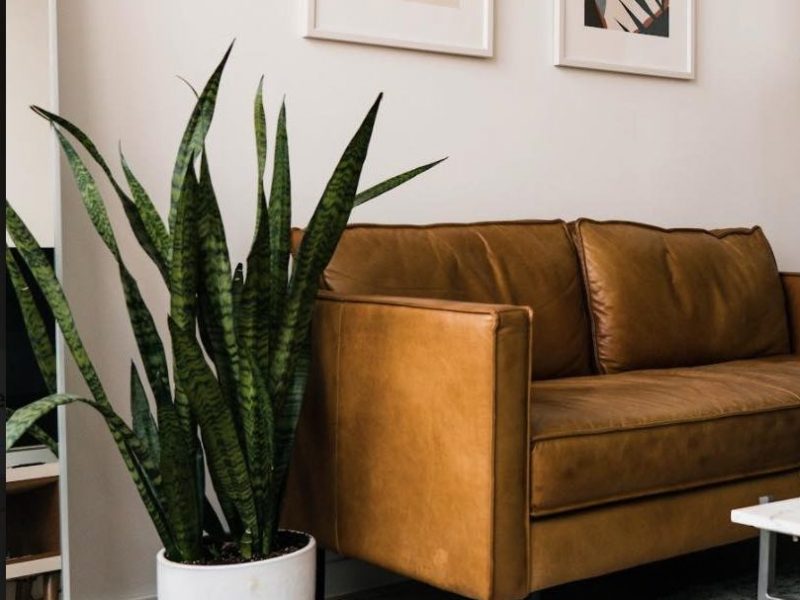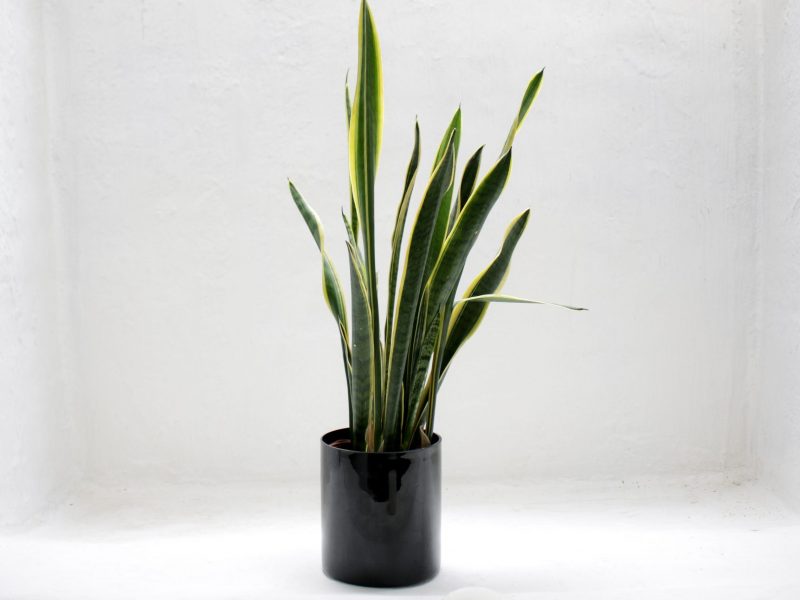
Snake Plants are pretty hardy plants that can be really easy to care for once you’ve got the environment right. But although they can adjust well to a range of environments, they aren’t immune to all problems. If you do start to notice that your Snake Plant’s leaves are curling, this may be a symptom of incorrect care or an issue with one (or more) of the environmental factors.
We have put together this guide to go through all of the different reasons why Snake Plants might develop curling leaves as well as how to spot, treat and prevent the problem so you can get your plant back on track in no time.
Underwatering is a common cause of curling leaves
One of the most common reasons why Snake Plants start curling their leaves is due to a lack of moisture in the soil. Although they don’t need frequent watering and thrive in dry potting mix, they can’t go for months and months without any water, particularly in the warmer months of the year.
You do want to be a little careful with this one because it is easy to overwater a Snake Plant. This is why it’s important you are 100% sure this is the problem, and then make sure you don’t go the other way and give it too much water.
Take the plant out of the pot and check the moisture in the potting mix. If the soil feels very dry then underwatering may be the issue as there is just not enough water getting up to the plant. You also want to look out for crispy roots as this is a telltale sign of underwatering.
To solve the issue, you want to water your Snake Plant a tiny little bit each day for one week. This will slowly moisten the soil and won’t cause any shock.
If the issue has progressed quite far then the impacted leaves may not return to normal and you may have to trim those off. However, if the leaves are only slightly curling inwards then these may uncurl as you solve the issue.
Now that you have treated the issue, it’s equally important that you prevent it long-term. Make sure that you either increase how frequently you are watering your Snake Plant or how deeply. This ensures that the potting mix isn’t completely dry for long extended periods of time.
Heat stress can also cause leaves to curl
Another factor that can cause curling leaves on a Snake Plant is high temperatures. If your plant is exposed to a lot of warm or hot air, it will dry up quickly and your plant will curl its leaves to save moisture.
Luckily this is quite an easy problem to diagnose as you should use a digital thermometer and place it next to your plant. This will help you spot fluctuations that might be because your plant is too close to a window that gets the afternoon sun and is therefore sitting in a hotspot for half of the day for example.
Other causes could include your plant being close to your oven, a radiator or a heating vent.
A curling Snake Plant could indicate cold drafts
On the other end of the temperature spectrum, cold air can also cause curling leaves (which is why a digital thermometer will be your best friend and is a great investment). Make sure that you draft-proof any windows/ doors that are close to your Snake Plant as any cracks can cause a small stream of really cold air to hit your plant in winter.
But it’s not just the colder months that cause havoc with your plants as air conditioning units can be quite damaging as well. The constant flow of cold air might be refreshing to you but it can actually freeze the leaf tissue in your plant if the issue isn’t solved quickly.
Alongside freezing your plant and causing a range of issues, if your Snake Plant is in quite a cool room, this can also increase the risk of overwatering and root rot. These plants really don’t need much water and potting mix takes a bit longer to dry out in cold environments so this is the perfect combination for root rot. So just be extra cautious when it comes to caring for your Snake Plant in winter or in colder rooms in your home.
Direct sunlight might be to blame
Snake Plants are pretty adaptable when it comes to sunlight and thrive in dark corners and bright rooms. However, it can happen that too much intense sunlight can damage the leaves on your plant and cause them to curl up. This primarily happens in the height of summer if your plant is right next to the window.
Curling leaves can occur because the leaves dry out in the hot direct sunlight (and use this as a mechanism to reduce moisture loss) but also because the leaves curl up to protect themselves against the sun.
If the issue progresses for a while, it can also cause irreversible damage such as brown or yellow patches.
Curling leaves are often reversible and we recommend placing your Snake Plant in a slightly shadier spot to allow it to recover. Burnt patches are unfortunately irreversible.
Pests could be a worrying cause of curling Snake Plant leaves
Whilst it’s pretty rare for your Snake Plant to be suffering from a pest infestation if it doesn’t spend any part of the year growing outdoors, it can still happen.
Check your plant over for bugs or signs of them (these signs include small spots on the leaves, holes, white powder or webbing across the leaves).
If you find bugs, wipe each leaf with warm soapy water to try and remove as many as possible. We recommend giving your plants a shower and as Snake Plants are pretty hardy you can get away with a stronger water pressure compared to most other plants which is helpful. If this doesn’t get rid of the pests, you can treat your Snake Plant with neem oil to fight the infestation.
Make sure to check over your other plants in the room to see if any other plants have pests. It is vital that you keep your infected Snake Plant (and other infected plants) a good distance away from any of your other houseplants as you don’t want the pests to spread.
Those are the most common reasons why Snake Plants develop curling leaves. It can be a little bit of a tricky issue to diagnose because there are quite a few subtle problems that can have that effect. This is why we recommend going through each one whilst inspecting your plant and its environment to best figure out what is causing the curling leaves.
To learn more about how to keep your plant thriving, check out our Snake Plant care guide.














